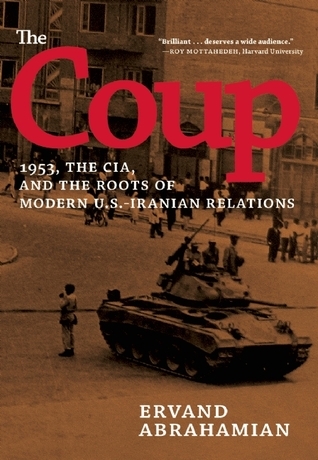
The Coup: 1953, the CIA, and the Roots of Modern U.S.-Iranian Relations
Book Description
A secret operation that changed the fate of a nation unfolds in the shadows of Cold War intrigue. "The Coup: 1953, the CIA, and the Roots of Modern U.S.-Iranian Relations" exposes the tumultuous events that saw the U.S. government overturn a democratically elected leader, igniting decades of tension and turmoil. With meticulous detail, Ervand Abrahamian unveils the tangled web of espionage, betrayal, and geopolitical ambition that reshaped alliances and fueled conflict. How did a single coup set the stage for an enduring struggle that echoes through the corridors of power today?
Quick Book Summary
"The Coup: 1953, the CIA, and the Roots of Modern U.S.-Iranian Relations" by Ervand Abrahamian provides an incisive account of the 1953 coup in Iran, in which the U.S. Central Intelligence Agency and British intelligence orchestrated the overthrow of Prime Minister Mohammad Mossadegh. Drawing on a wealth of historical documents and recently declassified materials, Abrahamian situates the coup within the wider context of Cold War politics, imperial interests, and the struggle for control over Iranian oil. The book explores how this pivotal event set a precedent for external intervention in the Middle East, profoundly impacting U.S.-Iranian relations. Abrahamian sheds light on the mythologies constructed around the coup, the roles played by various actors, and the lingering consequences that contribute to ongoing mistrust and conflict between the two nations.
Summary of Key Ideas
Table of Contents
Geopolitics and the Battle for Oil
The book opens by placing the 1953 coup within the larger context of global politics. At the heart of the turmoil was a struggle over Iran's control of its oil resources. The British, having dominated Iranian oil through the Anglo-Iranian Oil Company, found their interests abruptly threatened by Mossadegh’s move to nationalize the industry. For Britain, this threatened both economic interests and imperial prestige. Abrahamian highlights how oil was not merely an economic asset, but a symbol of sovereignty and resistance to foreign domination, setting Iran on a collision course with Western powers.
Cold War Fears and American Intervention
As tensions escalated, Cold War dynamics intensified U.S. involvement. American policymakers, driven by fears of Soviet expansion and determined to contain communism, regarded Mossadegh's nationalist government as a potential entry point for Soviet influence. The book reveals how these anxieties were stoked by British lobbying, which painted Mossadegh as sympathetic to leftist elements. In reality, Abrahamian argues, the threat of communist takeover was exaggerated. Nevertheless, these Cold War fears provided the rationale for American intervention.
The Orchestration and Execution of the Coup
With backing from both the CIA and MI6, Operation Ajax was launched: a covert mission to topple Mossadegh and restore the shah. Drawing on primary sources, Abrahamian reconstructs how intelligence agencies employed bribery, propaganda, and orchestrated chaos on the streets of Tehran. The plot involved alliances with local Iranian actors, engineered protests, and false-flag operations to cultivate the appearance of popular uprising. Despite early failures, the coup prevailed, ousting Mossadegh and installing an autocratic regime more amenable to Western interests.
Legacy and Consequences for U.S.-Iranian Relations
Abrahamian details how the consequences of the 1953 coup reverberated through Iran’s political landscape and deeply affected U.S.-Iranian relations for decades. The restoration of the shah led to increased authoritarianism, repression of political dissent, and the cultivation of deep-seated resentment toward the United States among Iranians. The coup became a touchstone of nationalist grievance, paving the way for the 1979 revolution and lasting hostility. Abrahamian underscores how this single event soured relations and shaped perceptions of Western intent in the region.
The Role of Myth and Propaganda
The author also explores the narratives constructed around the coup by both Western powers and successive Iranian regimes. Myths, misinformation, and propaganda painted Mossadegh as a dangerous radical or a national hero, depending on perspective. Abrahamian critically examines how these representations served political agendas, shaping the memory of 1953 in both Iran and the United States. In doing so, the book encourages readers to question official accounts and grapple with the enduring ambiguities of this watershed moment in modern history.
Download This Summary
Get a free PDF of this summary instantly — no email required.





